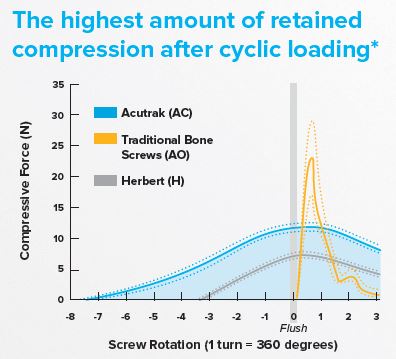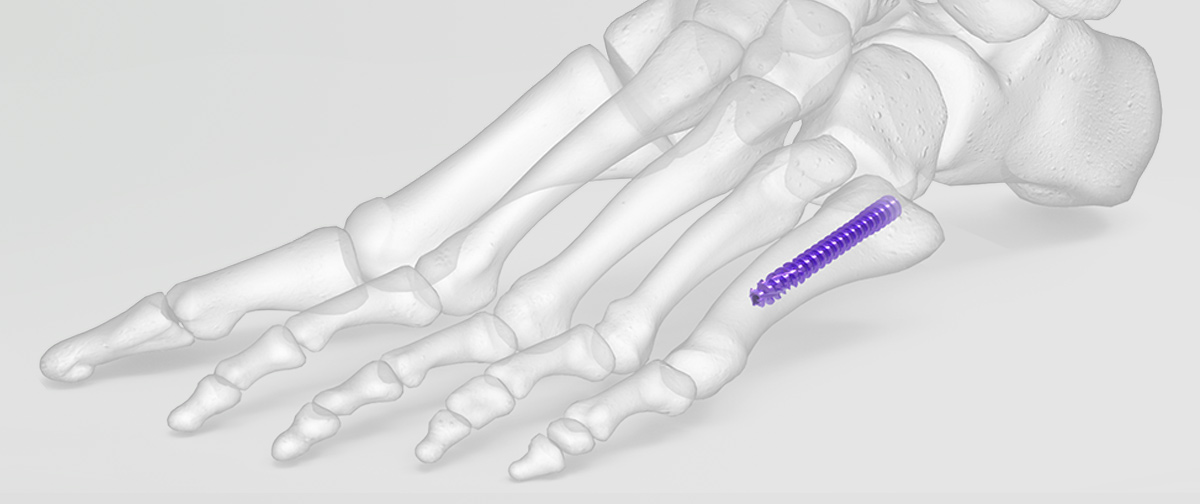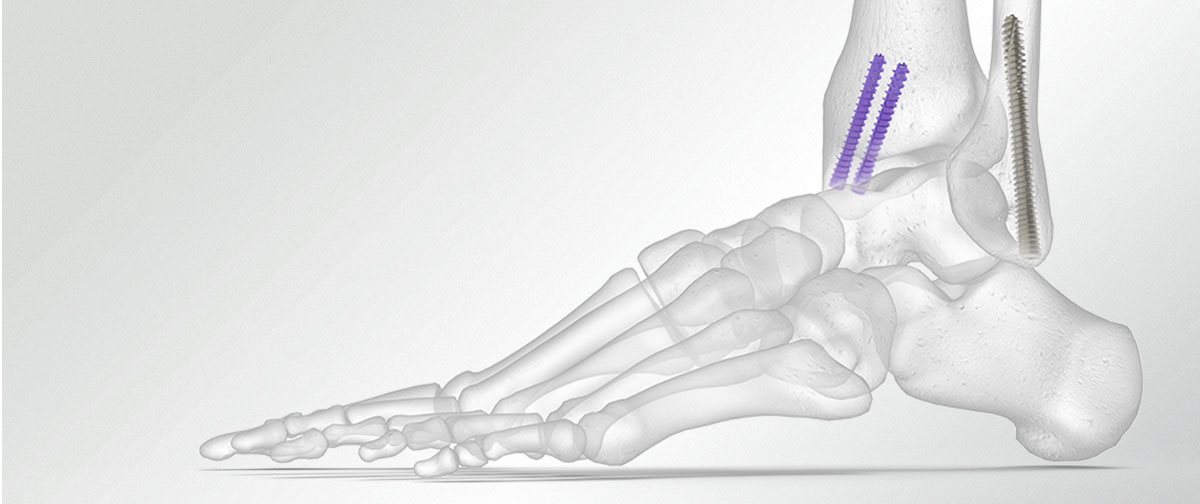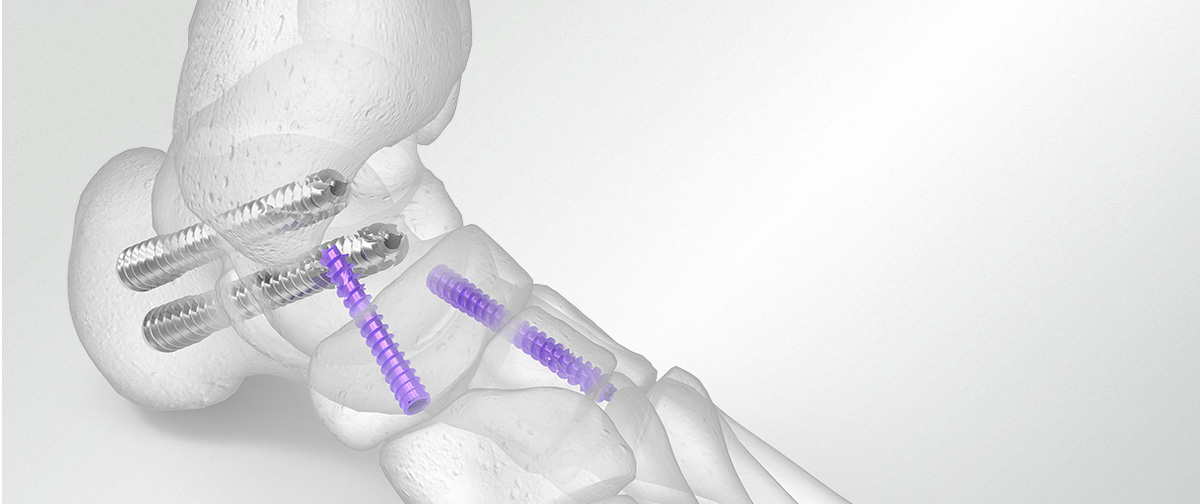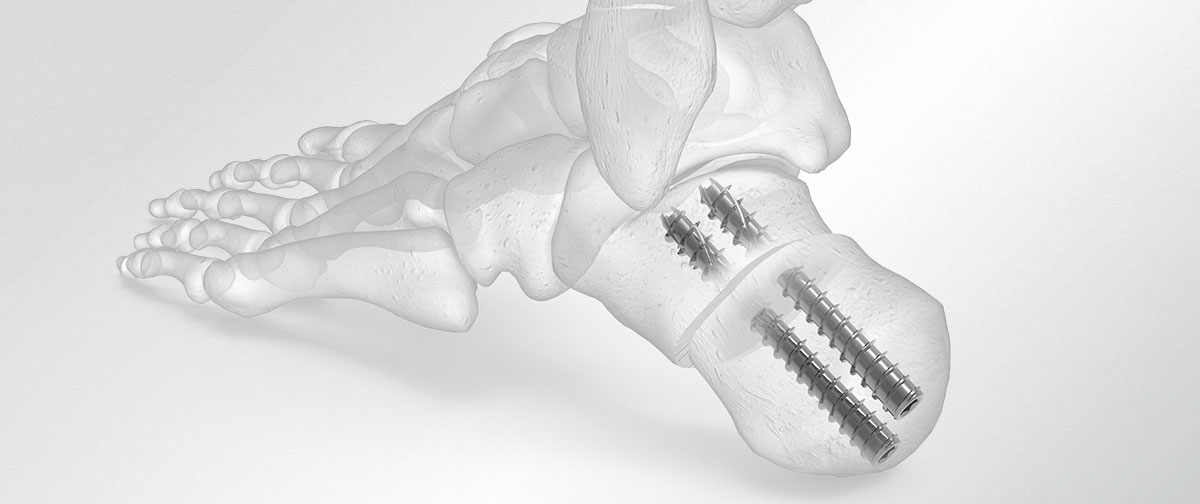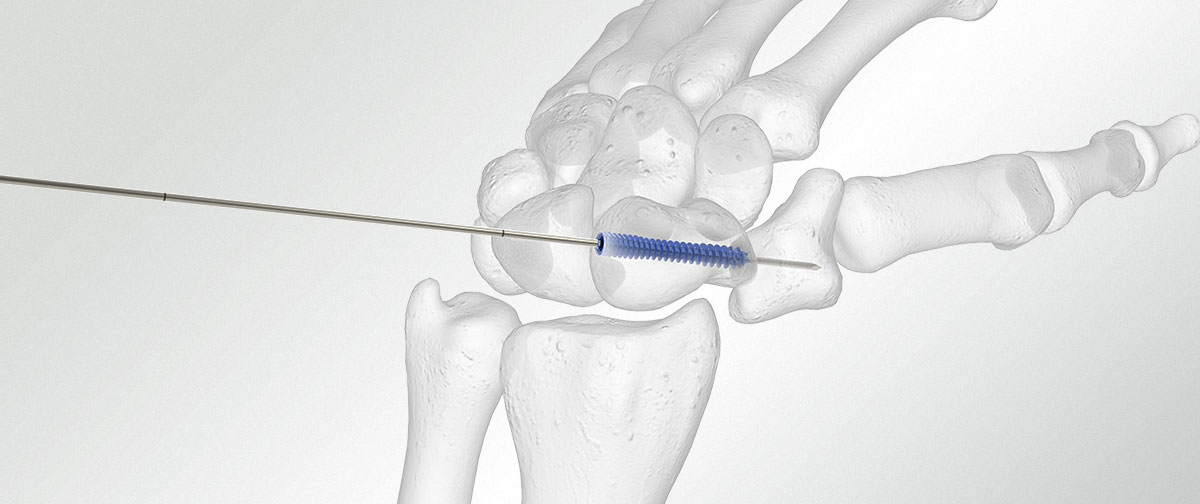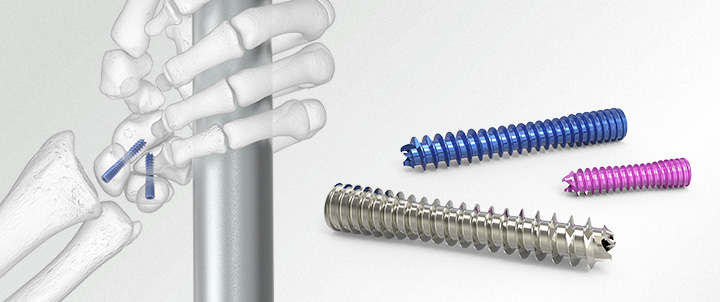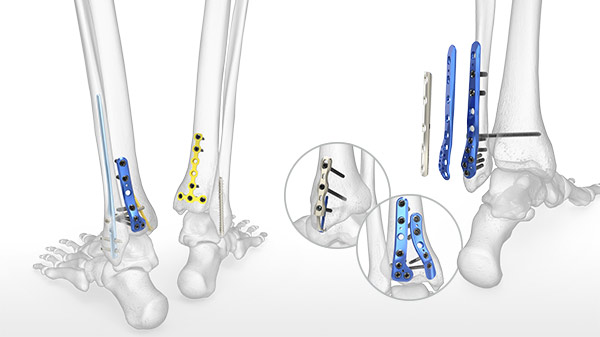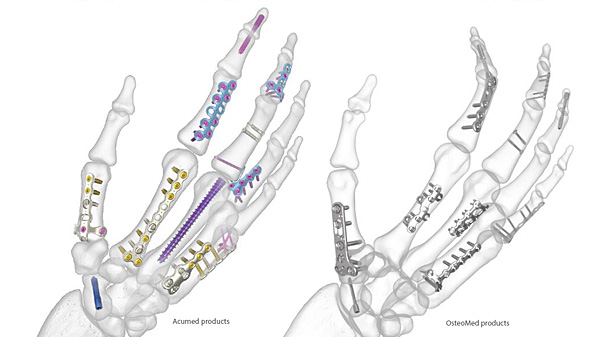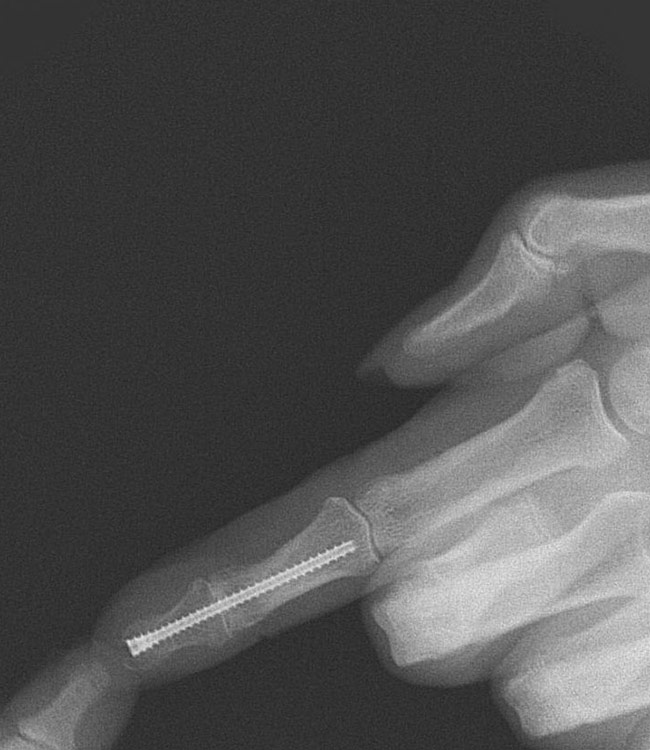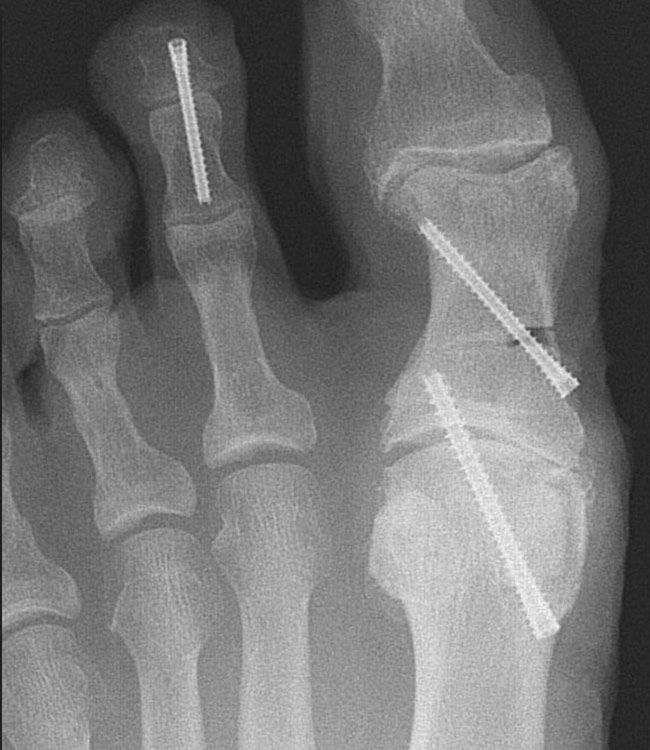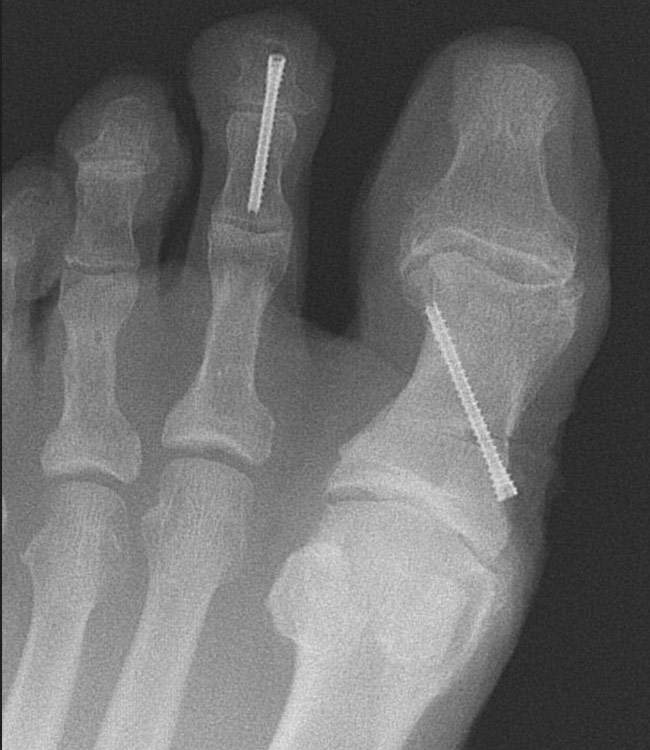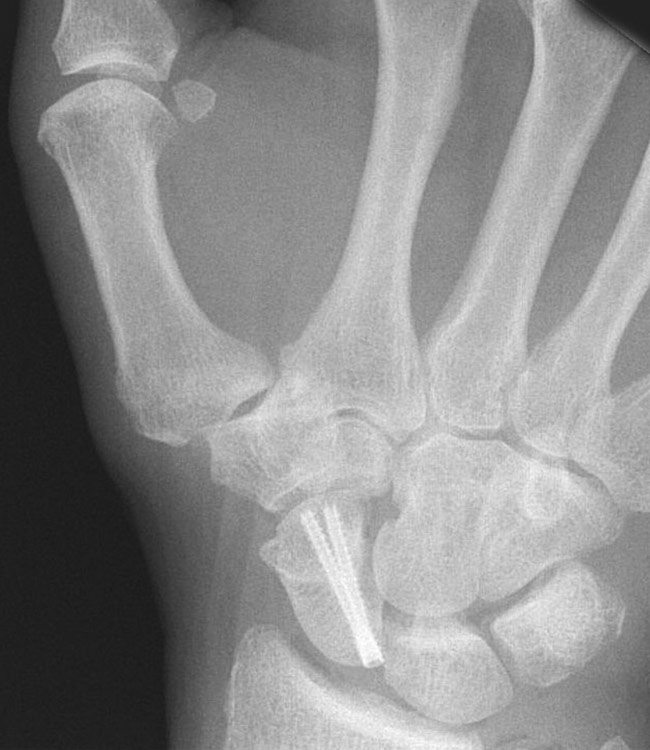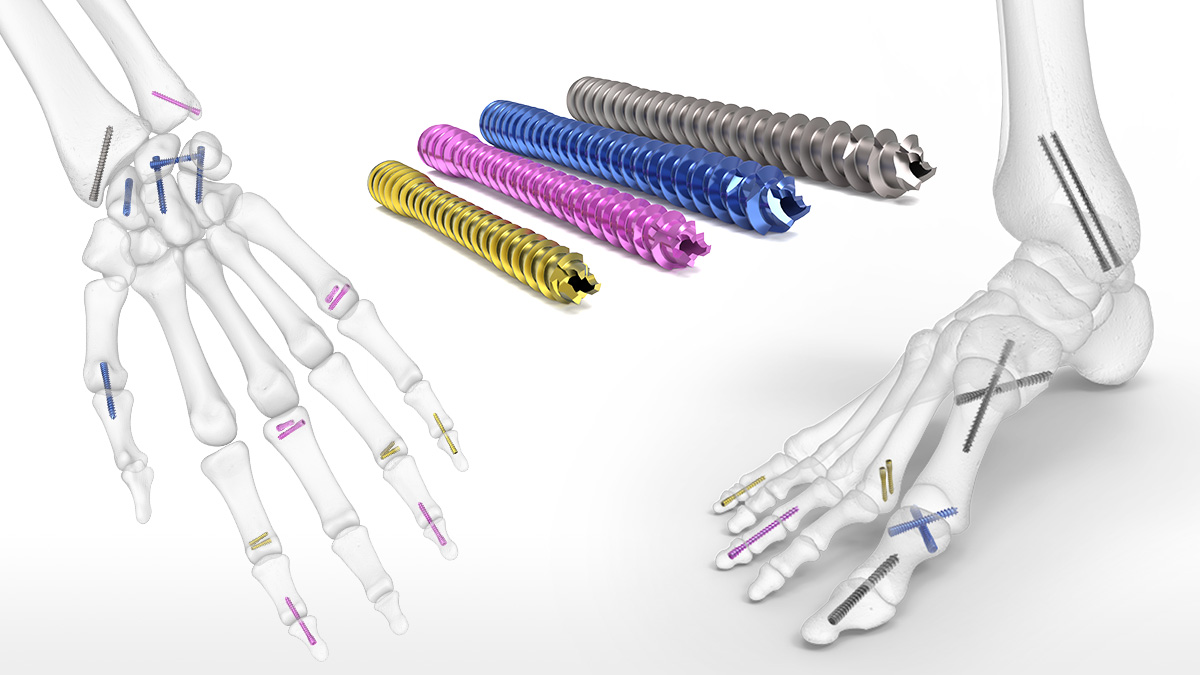
Product Overview
Acutrak 3 is the latest innovation in our headless compression screw technology, and comprises 93 unique screws that include the introduction of a new 2.0 mm diameter Nano screw and extensions to the existing lengths of the Micro, Mini, and Standard screws, allowing expansion on the many indications historically treated with the Acutrak 2 system.
Related Documents
Acutrak 3 Headless Compression Screw System Procedures
The Acutrak 3 Headless Compression Screw System can be used in the following procedures:
Distal Humerus Fracture (Distal Humerus), Radial Head Fracture (Proximal Radius), Coronoid Fracture (Proximal Ulna), Hallux valgus (Forefoot), Hallux varus (Forefoot), Hammer toe/Claw toe (PIP/DIP) (Forefoot), 1st Metatarso-phalangeal (MTP) Arthrodesis (Forefoot), Closing wedge osteotomy (Forefoot), IPJ (Forefoot), Medial closing wedge osteotomy (Forefoot), Proximal 5th Metatarsal Fracture (Jones Fracture) (Forefoot), Bunionette (Forefoot), Talus Failure (Hindfoot), Triple Arthrodesis (Hindfoot), Calcaneo-cuboid Arthrodesis (Hindfoot), Flatfoot (Hindfoot), Calcaneal Fracture (Hindfoot), Talonavicular Joint Arthrodesis (Hindfoot), Navicular Fracture (Midfoot), Navicular Cuneiform Arthrodesis (Midfoot), Medial Column Arthrodesis (Midfoot), First Tarsometatarsal Joint Arthrodesis (Lapidus) (Midfoot), Lisfranc Dislocation / Midfoot Fracture (Midfoot), Jones Fracture (Midfoot), Equinus Contracture (Other), Arthrodesis/Deformity Correction (Other), Four-Corner Fusion (Carpal / Metacarpal), Fracture management (Carpal/Metacarpal) (Carpal / Metacarpal), DIP/PIP Fusion (Phalanges / Thumb), Fracture management (Phalanges/Thumb) (Phalanges / Thumb), Proximal Humerus Fracture (Proximal Humerus)Instrumentation
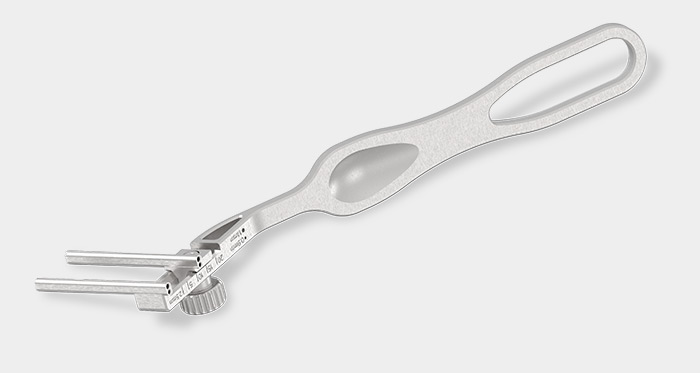
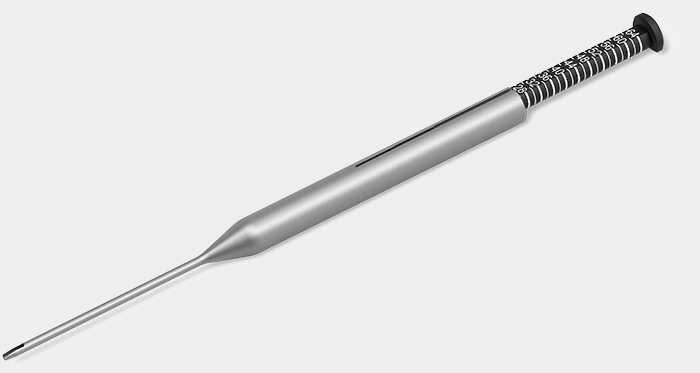
Key Publications
The Acutrak Advantage
With its introduction in 1994, Acutrak Headless Compression Screw technology revolutionized the way surgeons treat fractures, fusions, and osteotomies. Acutrak 2 introduced the next generation in fully threaded headless fixation, with larger guide wires, larger hex drivers, and a tapered end. The Acutrak 2 System is routinely used in a number of lower-extremity fracture fixations, including those featured below. Explore the Acutrak Advantage.
Solutions for Simple to Complex Trimalleolar Injuries
Hand Fracture Solutions That Have You Covered
Features
Continuously Variable Thread Pitch
The Acutrak fully threaded continuously variable thread pitch screw design provides greater compression and a larger window of compression as compared to partially threaded Herbert style screw designs.1 In addition, this feature allows a fracture or osteotomy site to lie almost anywhere along the length of the screw.
A Family of Options
Available in six different families for a total of 68 different screws, addressing applications throughout the upper and lower extremities.
Fully Threaded
Biomechanical studies have shown that fully threaded screws better handle the cyclic loading that may occur during healing. The Acutrak Headless Compression Screw technology has shown greater push-out strength, greater resistance to cyclic loading, and greater resistance to torsional loading when compared to differential pitch screw technology.1
A Heritage of Healing
Over 1.7 million Acutrak family screws implanted since 1994, supported by more than 100 clinical and biomechanical studies.
1. Wheeler DL, McLoughlin SW. Biomechanical assessment of compression screws. Clin Orthop Relat Res. 1998;350:237-245.
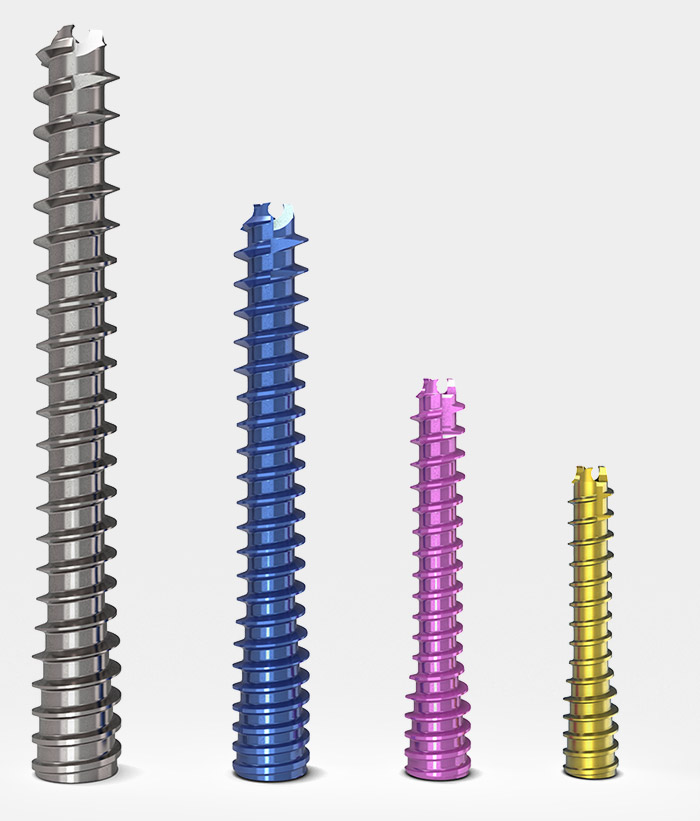
Videos
System Overview Animation
Acutrak 3 is the latest innovation in our headless compression screw technology and is comprised of 93 unique screws that include the introduction of a new 2.0mm diameter Nano screw and extensions to the existing lengths of the Micro, Mini, and Standard screws, allowing expansion on the many indications historically treated with the Acutrak 2 system.
Phalangeal Fixation Animated Surgical Technique
An animated version of Acumed's suggested surgical technique for Phalangeal fractures using the Acutrak 2 Micro screw to ensure reduction of the fragment, secure the fracture, and maintain rotational stability.
Radial Styloid Fracture Reduction Animated Surgical Technique
Step-by-step animated instructions of Acumed's recommended surgical procedure using the Acutrak 2 Standard screw to reduce a radial styloid fracture, and secure it in order to maintain reduction and rotational stability.
Scaphoid Fracture Reduction Animated Surgical Technique
An animated version of Acumed's recommended scaphoid fracture surgical technique using the Acutrak 2 Mini Screw to effectively reduce and secure the fractured scaphoid, and maintain rotational stability.
Jones Fracture Reduction Animated Surgical Technique
An animated version of Acumed’s recommended surgical procedure for reducing and fixating fractures of the fifth metatarsal using the Acutrak-4.7 cannulated screw.
The Acutrak 3 Family
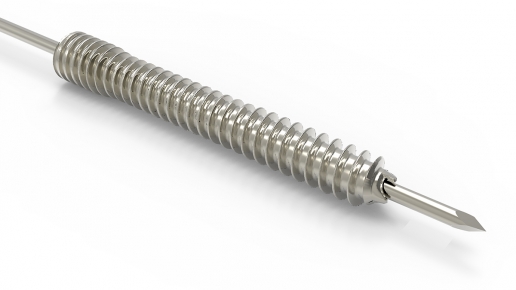
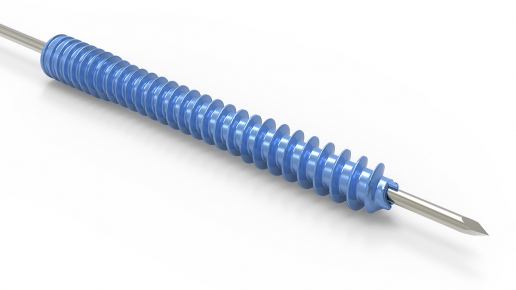
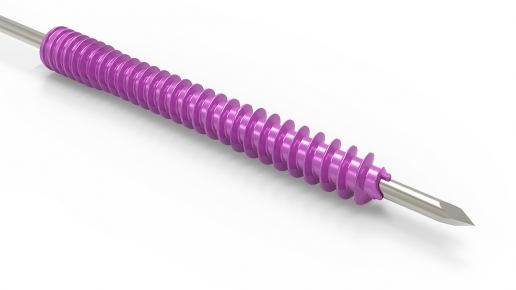
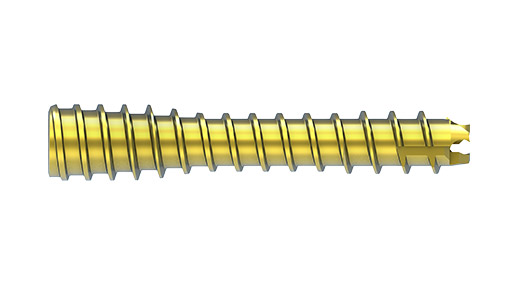
Case Study: Acute Radial Head Fracture
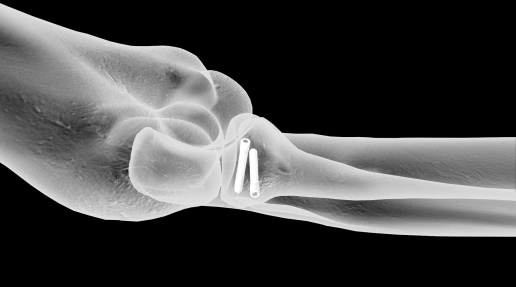
Acutrak 2 Supplemental Use Guides
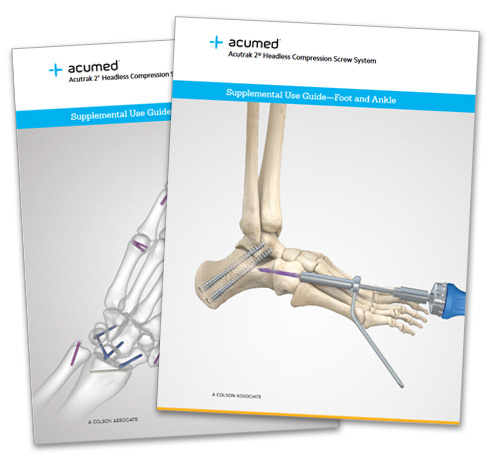
Foot & Ankle: AcuTwist and Acutrak 2 Micro, Mini, Standard, 4.7, and 5.5 are intended for use as fixation devices for small bones, bone fragments, and osteotomies. They are not intended for interference or soft tissue fixation. Acutrak 2–7.5 may be used for fusions, fractures, or osteotomies of the clavicle, humerus, radius, ulna, ilium, femur, patella, fibula, tibia, talus, malleolus, and calcaneus.
Hand & Wrist: Acutrak 2 Micro, Mini, and Standard are intended for use as fixation devices for small bones, bone fragments, and osteotomies. They are not intended for interference or soft tissue fixation.
Cyclic Loading
The highest amount of retained compression after cyclic loading1.
The highest resistance to torsional loading compared to AO and Herbert screws in cadaveric and synthetic bone material.1
1. Wheeler DL, McLoughlin SW. Biomechanical assessment of compression screws. Clin Orthop Relat Res. 1998;350:237-245.
